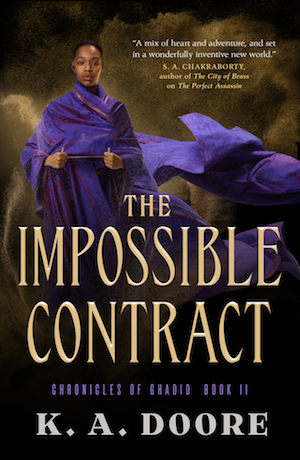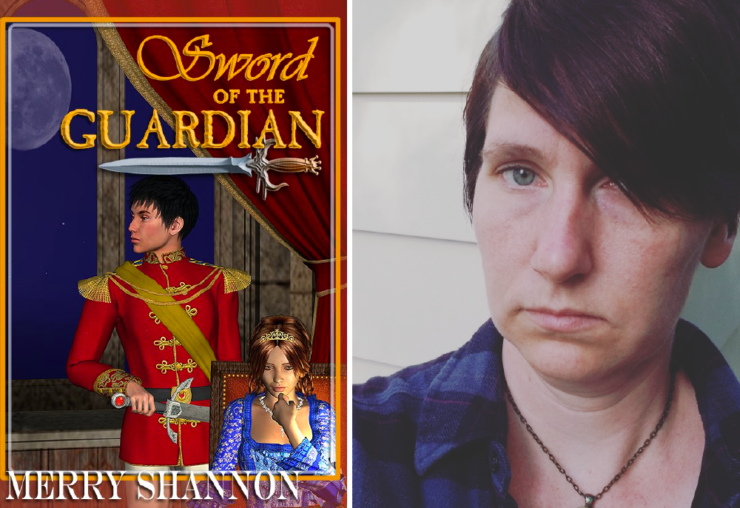Humans can’t help but look for patterns in the chaos of our lives. We create and share stories for many reasons, but primarily to make sense of it all. We shape our stories with structure and pattern in mind and those stories, in turn, shape us. We set our lives to the beats of stories, even plan our futures based on them. A good story can help us make a decision, give us expectations, even hope.
A bad story can hurt us.
The stories I grew up on had a clear progression: the main character starts out weak, young, and naïve. They are challenged. They fail. They try again. They fail. They try again. They triumph over evil.
And the boy gets the girl.
Sometimes, to really shake things up, the girl got the boy. These stories had no hint of any other possibility, only the inevitable. A girl and boy in the same story would always, always, end up together.
“I don’t want to marry a prince,” I slurred to my friends in Germany once, after one too many beers. “I want to marry a princess.”
This was how my first coming out went: thousands of miles from home and family, in a German basement, the ground-level doors thrown open to let out the stale conversation of three teenagers, and the lingering chill of winter sending goosebumps up my bare arms. I don’t remember how the conversation came to that point, just the choking need to share my personal discovery with someone and the sheer determined, maybe-a-little-inebriated, fearlessness of the moment.
But even in that slightly desperate, definitely emotional moment, I used a familiar story to shape my coming out. A story that I’d read again and again, had internalized to the point where I couldn’t imagine other paths, even as mine so clearly diverged.
A story that had never had a place for me.
After all, the boy always gets the girl.
I’d internalized those straight paths so thoroughly that when I came out, I defined myself by what I couldn’t do. I couldn’t get married, I couldn’t have kids, I couldn’t have a happily ever after. According to those stories, I simply didn’t exist, and I couldn’t imagine the possibility of a different story. Even a full decade after that night I first came out, I was still writing stories where the girl got the boy. Internalized homophobia is a bitch, and the process of shedding that particular narrative was long and drawn-out, but it started with Merry Shannon’s romance fantasy, Sword of the Guardian.
In the late 90s and early 00s I steeped myself in the Sailor Moon fandom. I helped moderate an online community that celebrated everything about the show and the manga and where we created our own narratives within that world, i.e. fan fiction. It was in that community that I first learned there could be more than just stories about the girl getting the guy, even if our beloved canon celebrated that1. It was in that community that I read my first queer fic, saw my first queer art, hell—even made my first queer friends.
Then a member of that community, Merry Shannon, began sharing her original fiction with us. Week by week and chapter by chapter, we followed Talon’s journey as she was forced to hide her identity and serve Princess Shasta, and then as she fell in love with her charge. The plot beats were as familiar as an old coat, but in the end they forged a new path: the girl got the girl.
The story had the feel of fanfiction in its delivery, parceled out and commented upon by this community, and because of that feel it was easy for me to dismiss. Fanfic has its own power, but back then, to me, it was still other.
Then the author announced she’d sold the book. Only a year later, I was able to pick up my pre-order from our local bookstore, hold the real book with real paper in my hands. By then I had come out to myself and others, had picked a college that was known for its inclusivity and queerness, had explained my story about the princess and the prince many times, had continued to define myself by what I couldn’t do.
Then I opened that book, tangible and something I could no longer ignore because it was online, because it was part of fanfiction, because it was not truly real (whatever that means), and read it again.
Sword of the Guardian is standard fantasy fare, sword and sorcery to its core. A kingdom and its king are in trouble, threatened by its own conniving chancellors and selfish provenances. A goddess watches over her land, tended to by her priestesses, who occasionally channel her power. Magic creeps at the edges, curling up unexpectedly but satisfyingly. A princess must find her place and define her power. Her guardian must keep her safe.
Princess Shasta and her twin brother are targeted by assassins during a public celebration. While her brother dies, Shasta herself is saved by Talon, one of the acrobats performing at the celebration. The King expresses his gratitude by offering to house and feed Talon’s sisters, but with a catch: Talon must stay by the princess’ side and keep her safe from future assassination attempts. As long as Shasta is safe, Talon’s sisters will remain safe.
Oh, and Talon must pretend to be a male soldier. Because Patriarchy.
At its heart, the story is about two opposites learning to work with each other, then live, then love. The fact that they are two women is almost secondary. They follow the same beats that a hetero love story would, from initial dislike and distrust to grudging respect to jealousy to I-would-die-for-you levels of love. Yet in that familiarity, Merry Shannon wrote a new story.
This is not a queernorm world—not by far – but it still dreams of something better, more queer-okay. Talon struggles with her sexuality, even calls her desire for women unnatural, but almost all of the homophobia is internal. Her gradual coming out mirrored the experiences that many of my fellow queers had at that time: first we worried that we were broken somehow, then we learned that being queer was a possibility, then we met others in the queer community who were patient with us and helped us understand ourselves, then we worried what our friends and family would think.
Talon lives these exact beats, from her first kiss with another woman, to her ongoing explorations with a friendly chambermaid, to her worries about her friends and family. Even though it’s made Known that in this culture, two women together is not normal, every step Talon takes along the way to fully coming out to herself and the people around her is filled with love and affirmation. While there are bumps along the way, the only people who have a problem with Talon and who she is are the villains of the story—the people she ends up cutting out from her life for the better.
That a queer person might not be punished for their queerness was radical enough at the time, let alone that they wouldn’t have to go through the laborious and oft-depicted process of convincing their loved ones that being queer wasn’t going to hurt anyone. But the story doesn’t stop when Talon and Shasta finally figure out their love for each other. It takes that critical extra step and lets them create a life together as well. They end the story as a family, complete with an adopted baby, and that, dear reader, was revolutionary for a young queer who believed she couldn’t ever have her Happily Ever After, let alone a child.
Sword of the Guardian showed me a new story, one where I didn’t have to define myself by what I couldn’t do. One where, instead, I could dream about all the things I could.
Buy the Book


The Impossible Contract
It’s hard, now, to remember the sheer dearth of happy stories available to young queers less than twenty years ago. But it took me seven novels and over fourteen years before I realized I could write a story with someone like me in it, a story where the girl got the girl. The Impossible Contract is that story, the culmination of reworking internalized patterns that started with this book, with realizing that there was even space for such a book in my favorite genre.
Today, there are a multitude of stories reshaping the genre and creating new beats and patterns for readers to internalize. Just this 2019, we got The Priory of the Orange Tree by Samantha Shannon, The True Queen by Zen Cho, Shatter the Sky by Rebecca Kim Wells, The Fire Opal Mechanism by Fran Wilde, Wilder Girls by Rory Power, and The Warrior Moon by K Arsenault Rivera—and that’s only a few of the f/f titles.
We’ve finally gone beyond needing to see that happiness is even possible for queer folx, to being able to explore the nuances of our relationships, they way they mirror cis-hetero ones and the way they create new patterns. Princesses and princes are out; sword lesbians and diplomatic bisexuals and space-cat loving pansexuals are in. I can only imagine what these stories mean for young queers today, but I eagerly await the new paths they’ll forge, the beautiful patterns they’ll create.
K.A. Doore was born in Florida but has since lived in Washington, Arizona, and Germany. She has a BA in Classics and Foreign Languages and an enduring fascination with linguistics. These days she writes fantasy in mid-Michigan and develops online trainings for child welfare professionals. The Perfect Assassin is her debut novel; its sequel, The Impossible Contract, publishes in November 2019 with Tor Books.
[1]To be fair, the queerness of Sailor Moon has long since been recognized and celebrated as well, but that is a different essay and baby!Kai wasn’t aware of it yet.











A shout out to Bold Strokes for publishing Merry Shannon. It’s hard to believe how the lesbian publishing world has changed and grown since the early aughts. Glad it worked out for you!